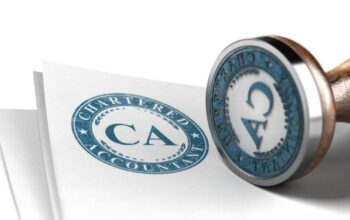Ecosystem or Biodiversity is something that we have around us, to understand it simply. But when we get to the depth of the definition there is a lot more we need to understand.
But before we understand the ecosystem, we must understand a few related terms. Students who need help in homework on the topic can benefit from the points being discussed.
An ecosystem can be defined as a bubble of life where different plants and animals live along with the weather conditions. An ecosystem consists of both biotic and abiotic components.
The biotic components are the living components while the abiotic ones are the non-living components. All these components together share a symbiotic relationship with each other.
While we study the ecosystem, we need to remember a few terms to understand it and get effective assignment help.
- Herbivorous animals are those animals who survive on green plants and derive their nutrition from them. An example of an herbivorous animal can be a deer or rabbit.
- Carnivorous animals are those animals who depend upon other animals for their food and thus derive nutrition from them. An example of carnivorous animals can be tiger, lion, fox, etc.
- Omnivores are those who depend either on plants or on other animals for their food and thus their nutrition. An example of this can be human beings or even a bear.
- Scavengers are those animals who feed on dead and decaying animals. An example of this can be vulture.
- The decomposers are those who break down the dead and decaying matter. An example of decomposers can be bacteria.
- The food chain is the chain that establishes a link between the various types of animals and how they move in the chain. For example, plants are eaten by herbivores, herbivores are eaten by carnivores, carnivores are eaten by omnivores, and omnivores, upon their death, are eaten by scavengers and then scavengers are later decomposed by the bacteria and mixed into the soil. That is how a food chain works.
- A food web is an interlinked connection of various food chains, that is, a logical arrangement of what eats what in a food chain. All these food chains are of a single ecosystem.
All these food chains are of a single ecosystem - Trophic Levels are the groups in which organisms in a food chain are arranged in. These trophic levels may be producers, consumers, and decomposers. The producers are the ones who provide food, the consumers are the ones who eat this food, and the decomposers are the ones who decompose the consumers.
- Producers form the first trophic level in a food web. They are the ones who make their own food and are known as autotrophs. These are mostly green plants who make food in the presence of sunlight, and water making use of chlorophyll and carbon dioxide. Autotrophs may also include certain bacteria and algae.
- Consumers are the ones who eat producers and form the next trophic level in the food web. These can either be carnivorous animals or omnivores. Then there are primary consumers which may be herbivorous animals who feed on plants, and secondary consumers who feed on the primary consumers or the producers. As a matter of fact, the secondary consumers form the third trophic level. The tertiary consumers eat the secondary consumers and are at the fourth trophic level of the food web. An example of this can be the eagle. Then we have the top predators who are at the apex level of the food web and these predators feed on the consumers.
- Detritivores or Decomposers are in the last part of the food chain. Detritivores or scavengers, as discussed above, feed on the dead and decaying remains of the animals. While the decomposers feed on the left-over parts of the scavengers and decompose the organisms. Thus, they complete the food chain by returning nutrients back to the soil.
- Biomass is the energy level at each trophic level. The autotrophs convert the sun’s energy into biomass and thus they have the most biomass. With the increasing trophic levels, the biomass keeps on decreasing. Thus, we must remember that with each trophic level, the number of organisms also keeps on decreasing so as to maintain a balance in the ecosystem.
- While we move above a trophic level, we see that the biomass decreases but there is an increase in the toxic chemicals. For example, when a herbivorous animal eats plants infested with pesticides, the chemicals accumulate in the animal’s fat. In turn, this herbivore is eaten by a carnivore who in turn is eaten by an omnivore, and so on. At each stage, the chemical keeps on getting stored in the fat of the animal. This is what we call bioaccumulation. All the animals that live in an ecosystem share a symbiotic relationship with each other. For example, if bacteria fix nitrogen in the soil, for use by the plants, these plants also provide nutrition to the leguminous bacteria, that live in their roots. That is how they share a mutually beneficial relationship or a symbiotic relationship with each other.
There are a few essential functions that an ecosystem performs:
- It serves the purpose of maintaining balance between all the trophic levels in an ecosystem.
- It provides stability and essential ecological growth.
- The cycling of nutrients between the biotic and the abiotic components takes place through an ecosystem.
- It serves the function of cycling minerals through the biosphere.
- There also takes place an exchange of energy at various levels in an ecosystem.
There are various other functions that an ecosystem performs, engaging itself with the various other components. The ecosystem is what sustains life on earth and provides nutrients and minerals for its survival.
The points stated above are sufficient to offer assignment help or help in homework to students who require the same.




